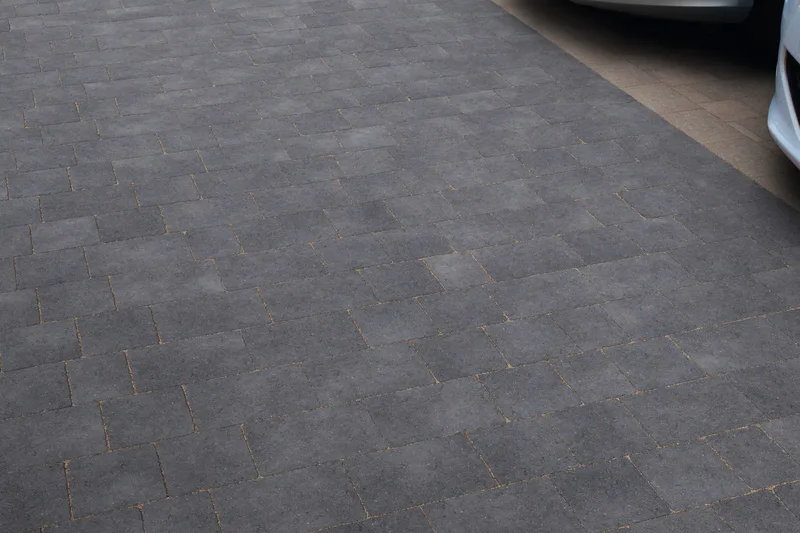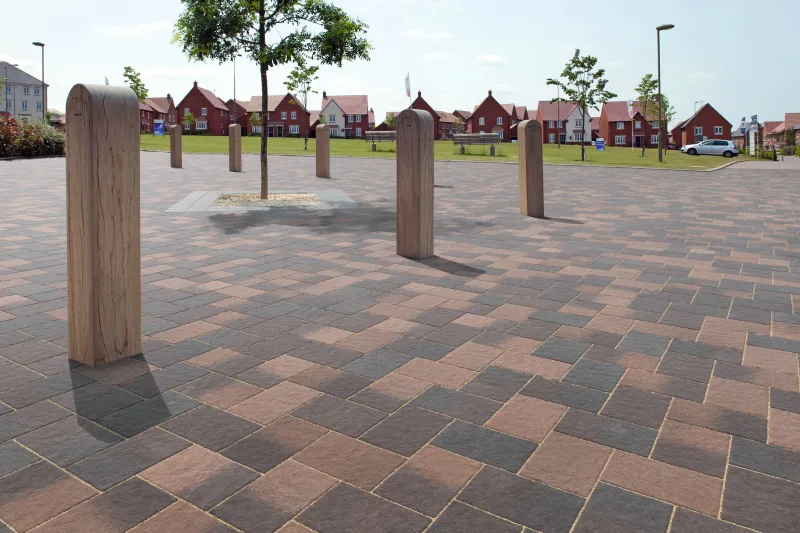Beautiful shared spaces that not only look great but also cost you less? Chris Frankland, Marshalls Marketing Director, looks at how early involvement between enlightened developers and responsible manufacturers is put great-looking, premium community spaces back on to every housing developers’ agenda – even when budgets are tight.
As a developer, you’ll know that a well-designed and carefully installed development is the best advert for your business. The housing estates you leave behind are your calling card; a very visible demonstration of the pride you take in your work. Before a customer has even walked into one of your show homes, it’s highly likely that they’ll have visited a nearby sites to see the quality they might expect.
It’s ironic, then, that the external features of a housing development are frequently right at the bottom of a developer’s priority list. It’s the last element to be installed, it’s frequently the area where the cheapest and least skilled labour is employed, and it’s the first area to be cut back on when savings need to be made.
Why have housing developers historically left outdoor spaces until last?

Tegula Block Paving in Charcoal
People spend the majority of their time inside their homes, and make buying decisions accordingly – so, saving a few pounds per metre on the external walling might pay for better white goods. Using a cheaper driveway surface might just save enough to cover the kind of premium bathroom that will look great on the website. In an ideal world, you’d put as much resource and effort into the outside infrastructure as you do into the homes themselves… but all too often the reality of budget constraints mean that compromises have to made. Shaving cost off the external infrastructure is all too frequently a necessary evil for modern developers.
But what if that wasn’t the case? What if there was a way of maintaining the quality of the external works without compromising the standard, quality and finish of the houses you sell?
How do you strike the balance between functionality, cost-effectiveness and aesthetics?

Coppice Paving in Cedar Blend
All of the external works have a function to perform. Primarily they’re there to do something; to provide durable, hardwearing surfaces that might need to support heavy loads and stay looking good for years to come. The surfacing of these features – the element you can actually see – is frequently just a small element of the structure. The majority of the cost of external infrastructure is frequently hidden beneath the surface; the structural layers that provide the functional robustness of the installed system. Cost analysis on pavements, for example, demonstrates that the surfacing element makes up just 20% of the total cost of the system.
Working out how to reduce the cost of the sub-structure will bring far greater financial gains than cutting corners on the surfacing material - understanding this is the first step to realising the beautiful outside spaces. Ensure that the sub-structure at the core of your external works will serve its purpose without being over specified and you’re likely to be able to fund the kind of beautiful finish that will sell developments.
How can supplier expertise benefit developers?
It stands to reason that long-standing suppliers and manufacturers have more experience and knowledge of their own products than anyone else. They also need to ensure that their product performs as well as possible for as long as possible – perhaps even more so than you. Reputable suppliers will have invested significant resources in testing, to understand how their products perform, they’ll know how best to install them, and offer advice about which sub-structures to use to ensure the most robust long-term performance. Take us for example, Marshalls products, such as Tegula, have remained popular in the developer market for years, thanks to aesthetic, durability and the ability to meet varying traffic and permeability requirements. But it’s not only the product itself which makes it a best-seller, it is also the expertise and experience we have of it being installed in different projects which can then be shared with new customers.
It’s worth bearing in mind that sometimes this up-to-the-minute advice may contravene British Standards, which will have been created some years ago based on old experience and knowledge. Designing and constructing outside of the Standards shouldn’t be considered a problem, so long as the supplier is prepared to indemnify the design against its own PI.
What to look for in a supplier
Working with responsible suppliers can sometimes drive cost out of structural designs, freeing up funds to spend on premium, great looking surfacing that will help you to sell your developments quickly – and at the right price.
When considering a new relationship with a supplier look for:
- A long standing, reputable and financially robust company
- External accreditation for any testing (universities, independent testing houses, industry experts etc)
- Manufacturer’s / suppliers design warranty
- Professional Indemnity
Working with Marshalls
If you’ve used Marshalls for hard landscaping products before you will know that we offer the above, and more. We have recently launched a dedicated area for house builders on our website, to make product research and selection easier and quicker.



